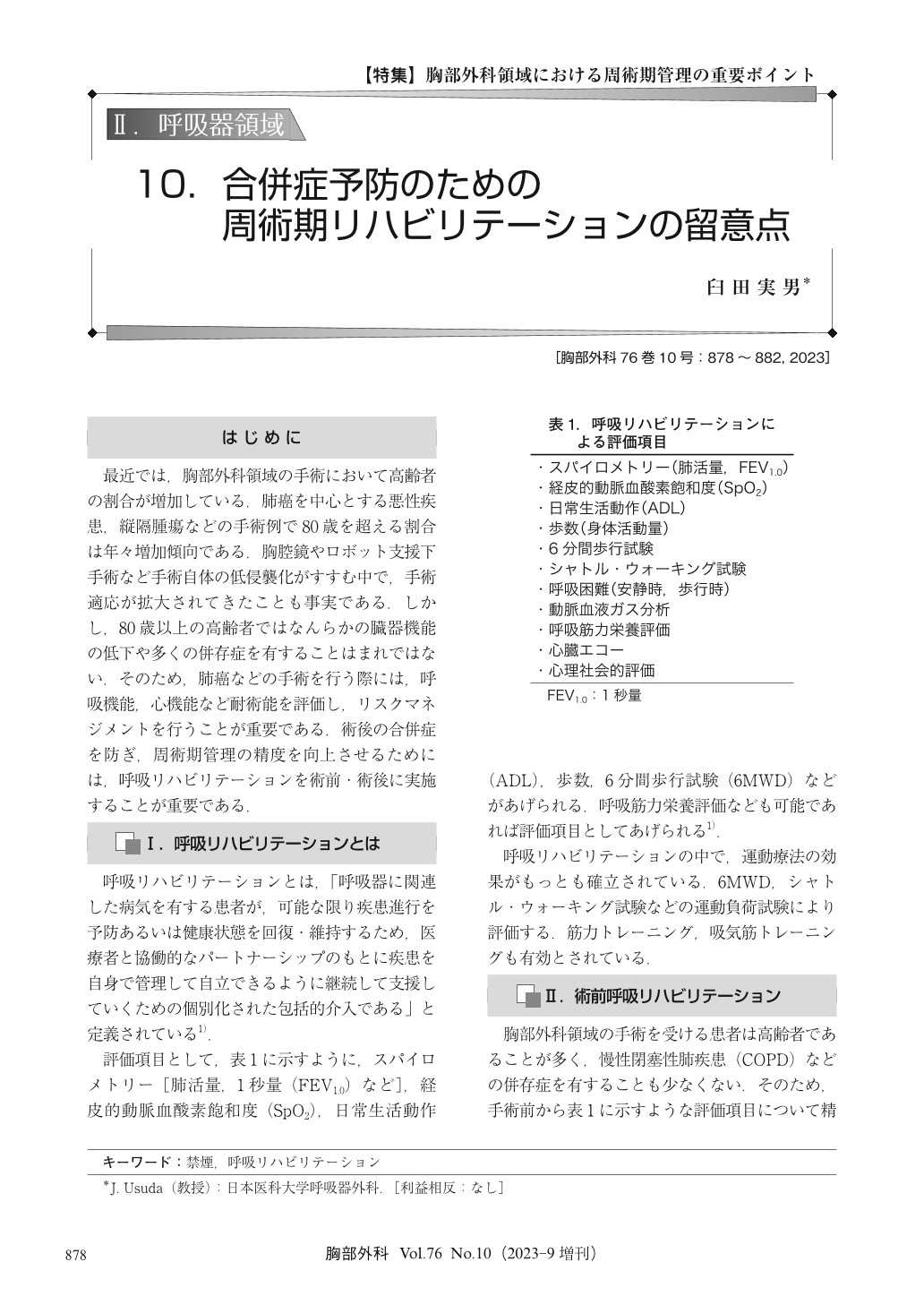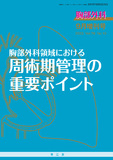Japanese
English
- 有料閲覧
- Abstract 文献概要
- 1ページ目 Look Inside
- 参考文献 Reference
最近では,胸部外科領域の手術において高齢者の割合が増加している.肺癌を中心とする悪性疾患,縦隔腫瘍などの手術例で80歳を超える割合は年々増加傾向である.胸腔鏡やロボット支援下手術など手術自体の低侵襲化がすすむ中で,手術適応が拡大されてきたことも事実である.しかし,80歳以上の高齢者ではなんらかの臓器機能の低下や多くの併存症を有することはまれではない.そのため,肺癌などの手術を行う際には,呼吸機能,心機能など耐術能を評価し,リスクマネジメントを行うことが重要である.術後の合併症を防ぎ,周術期管理の精度を向上させるためには,呼吸リハビリテーションを術前・術後に実施することが重要である.
The number of elderly patients in thoracic surgery is increasing. The percentage of patients over the age of 80 in surgical cases of malignant diseases such as lung cancer and mediastinal tumors is increasing every year. It is also true that the indications for surgery have been expanding as surgery itself has become less invasive, such as thoracoscopic and robotic surgery. However, it is not uncommon for patients over 80 years of age to have some organ dysfunction and many comorbidities. Therefore, when performing surgery for lung cancer and other diseases, it is important to assess the patient’s ability to tolerate surgery, including respiratory and cardiac functions, and to perform risk management. To prevent postoperative complications and improve the accuracy of perioperative management, respiratory rehabilitation should be conducted before and after surgery, and not only smoking cessation instruction but also inhalation training using incentive spirometry (IS), breathing exercises, and the use of inhalers such as long-acting β2 agonist (LABA)/long-acting muscaring antagonist (LAMA) for patients with chronic obstructive pulmonary disease (COPD) are useful.

© Nankodo Co., Ltd., 2023


